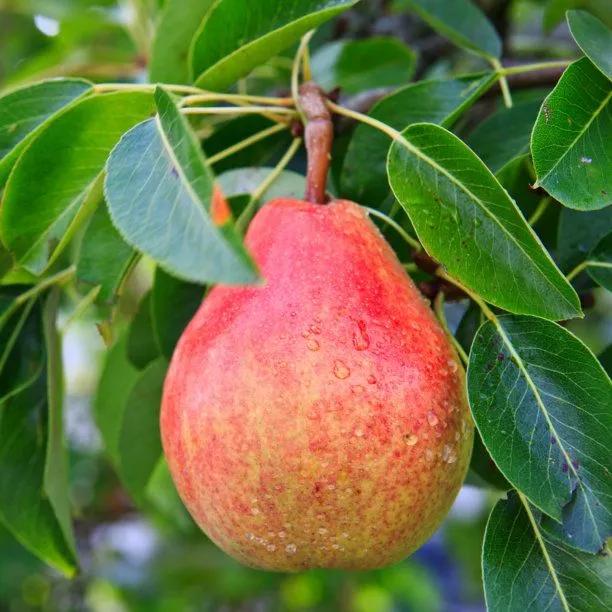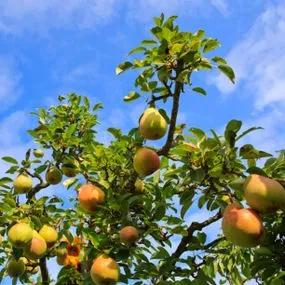'Williams Bon Chretien' Pear Trees
The details
- Eating: soft & melting.
- Great for stewing.
- Partially Self Fertile.
- Pollination Group B.
- Heavy cropper.
- Crops Late August-September.
Description
Pyrus Williams Bon Chretien (Bartlett) - Early Season
Description of Williams Bon Chretien Pear Trees & Fruit:
Usually just called William's, this is a beautiful old pear variety - large, sweet, smooth and very juicy with the fruit turning from green to yellow when ripe. While it is a standalone, superb eating pear, Williams bon Chretien, which is partially self fertile, is also great for stewing or poaching. Jamie Oliver has a great recipe for poached pears that works best with this variety.
It is a reliable, heavy cropping and hardy tree that is grown on a large scale on farms all over the world. It is more spreading than most pear trees.
Browse our range of pear trees or see the full variety of fruit trees.
Features:
- Partially self fertile.
- Pollination Group B.
- Harvest Late Aug-September.
- Recommended for Scotland & the North.
- Best eaten fresh - does not store well.
Pollination Partners for Williams Bon Chretien:
This pear is in pollination group B which means that it will cross-pollinate any other pear tree that you can buy from us - take your pick! (Except Louise Bonne of Jersey & Sensation).
See our guide to Pollinating Pear Trees for more details.
Growing Williams Bon Chretien Pear Trees:
Rich soil is important - dig in plenty of good manure and compost before planting.
Soil drainage must be good.
The more sun your trees get the better your crops will be.
Details about delivery sizes: Guide to Fruit Tree Sizing.
History & Parentage of Williams Bon Chretien:
Bred in the late 1700's by Mr Wheeler of Berkshire with Louise Bonne of Jersey as one parent. A Mr Stair later bought the house and took grafts from the tree with Richard Williams, a nurseryman, who named it after himself in 1814.
It is the most widely grown pear tree in the world, partly because although it is best eaten fresh, it is also very good for canning.
In America, it is called Bartlett. At Ashridge, we call him Willboch.






